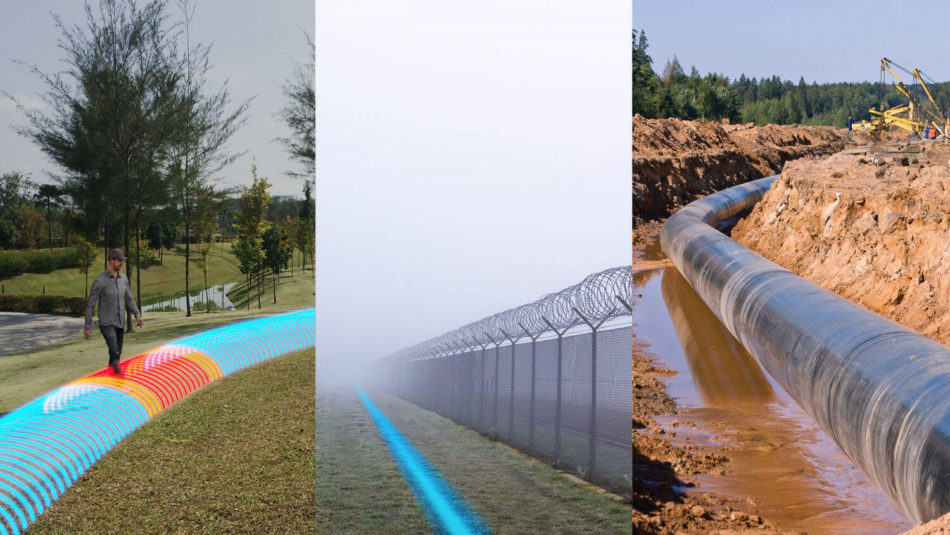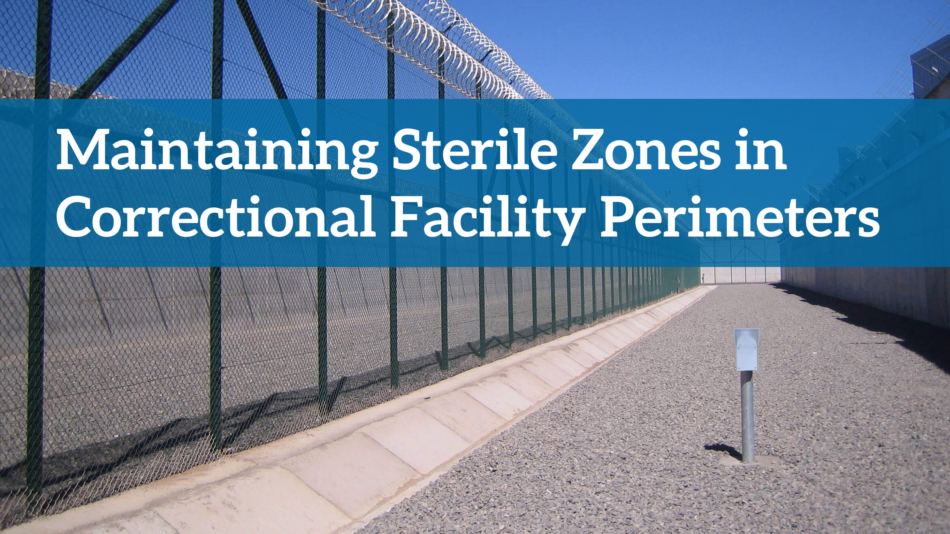FiberPatrol FP1150 is a perimeter intrusion detection system that can be fence-mounted, buried, or deployed in a wall-top configuration. It can also be used to protect data conduits and buried pipelines. Advanced adaptive signal processing along with certified SMS/VMS integration options ensure the highest level of security and performance.
Buried Sensors

Completely covert, buried intrusion detection sensors maintain the aesthetics of a site and are invisible to intruders. Senstar offers two buried sensor technologies, each with distinct benefits depending on the application.
FiberPatrol FP1150
Fiber Optic Intrusion Detection System for Fence, Wall, and Buried Applications
FiberPatrol FP1150 for Data Conduit Protection
Point-locating Fiber Optic Sensor for Detecting Data Conduit TPI
The FiberPatrol FP1150 advanced fiber optic sensor detects third-party interference (TPI) to fiber optic data links and other cable infrastructures. The FP1150 requires just one optical fiber to detect potential TPI events anywhere along the cable’s pathway, and determines and reports the precise location of each event.
FiberPatrol FP1150 for Pipeline TPI
Point-locating Buried Fiber Optic Sensor for Pipeline TPI Detection
The FP1150 is designed specifically to detect third-party interference (TPI) activities that threaten pipelines: machine or manual digging, heavy machinery operating in the nearby vicinity–even people walking within the protected area if so configured.
OmniTrax
Locating Buried Cable Intrusion Detection Sensor
OmniTrax is a volumetric sensor that uses a pair of buried cables to generate an invisible above-ground electromagnetic detection field. When an intruder enters the field, an alarm is generated. Intrusions are located to within 1 m (3 ft). Being invisible, OmniTrax offers ultra-high security while maintaining site aesthetics.
Buried Sensors FAQs
What Are Buried Sensors?
Buried sensors detect and locate the movement of people and vehicles as they approach or cross the perimeter. Completely covert, buried intrusion detection sensors are invisible to intruders and maintain site aesthetics. Buried sensors can be fiber optic or cable-based.
What are Buried Fiber Optic Sensors?
When an intruder moves across the ground above a buried fiber optic sensor cable, whether walking, running, crawling, or driving, characteristic vibrations are created. The system distinguishes these from background vibrations and declares an alarm when the detection criteria are met. Fiber optic sensors may also be used pipeline Third Party Interference (TPI) detection and data conduit protection.
Why Buried Sensors?
Being invisible, buried sensors offer the lowest Vulnerability to defeat (Vd) of any outdoor intrusion detection sensors. Senstar buried sensors can pinpoint the exact location of an intrusion and even detect simultaneous intrusions distributed around the perimeter.
What are Buried RF Cable Sensors?
Consisting of a pair of buried cables, the sensor generates an invisible above-ground radio frequency (RF) electromagnetic detection field. When an intruder enters the field, an alarm is generated. Operation is not affected by vegetation (including grass, shrubs and trees) and these sensors are insensitive to wind, rain, snow, hail, sandstorms, fog, extreme temperatures, seismic vibration, acoustics, magnetic effects and blowing debris. They can also be calibrated to reject animal detection.
Similar Terms
fiber optic linear ground detection system (LGDS), ported (“leaky”) coaxial cable
How To Deploy Sustainable Green Solutions without Compromising Security
For physical security professionals, ensuring that a site’s security program (physical systems, people and procedures) achieves its goal of reducing risk and protecting assets is of primary importance. Traditionally, this means...
Maintaining Sterile Zones in Correctional Facility Perimeters
Maintaining a secure perimeter from both internal and external threats is a fundamental requirement for correctional facilities. The perimeter’s security infrastructure, as part of a comprehensive physical protection system (PPS), includes...
Securing Space Launch and Military Facilities
The physical security of space launch and military installations is critical for both national defense and public safety. A deliberate attack on a facility could have profound geopolitical implications. Even less serious...



